Classic Lasagna
This post may contain affiliate links. Read my full disclosure policy.
Comforting, familiar flavors but refined—my all-time favorite lasagna layers oven-ready noodles, a rich meat sauce, veggies, and plenty of cheese.
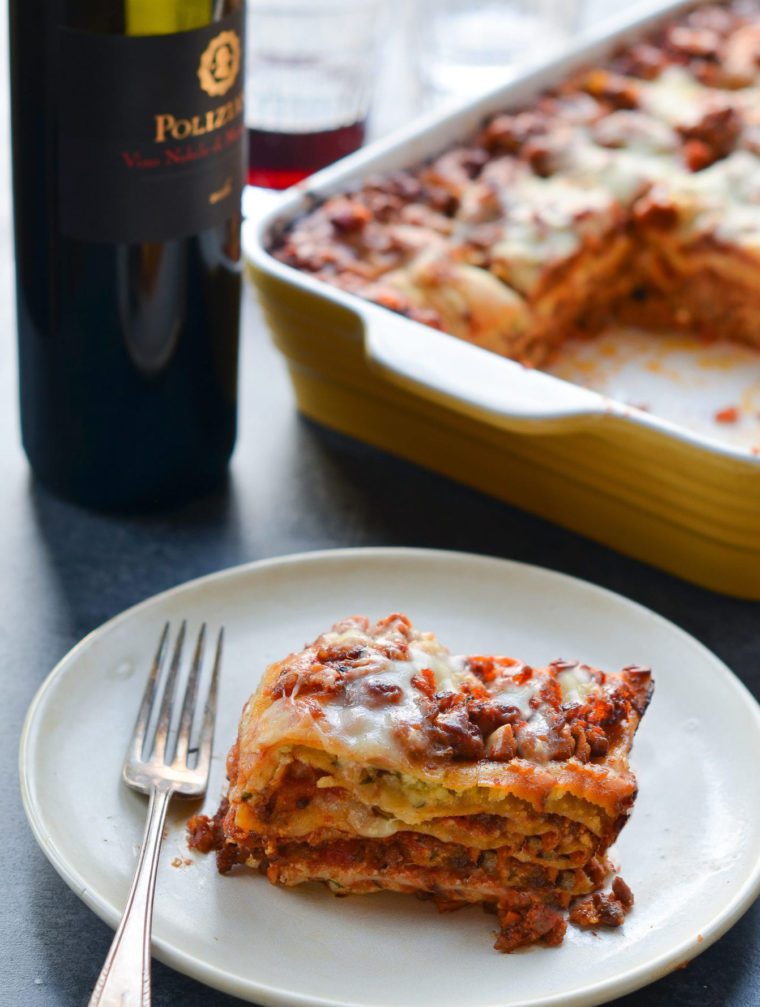
I love this lasagna recipe because it beautifully combines the familiar flavors of the lasagna I grew up on with the refined taste of a restaurant-style dish. It’s also relatively easy to make, thanks to the use of oven-ready or no-boil lasagna noodles, which save time and effort while delivering a taste remarkably similar to fresh homemade pasta—a definite win! The noodles are layered with a flavorful meat sauce made with Italian sausage, vegetables, crushed tomatoes, and cream, as well as creamy ricotta, gooey mozzarella, and Parmesan cheese. Baked until bubbly and golden, it’s the perfect cozy dish for a crowd, and it reheats and freezes well, too. This is definitely my go-to lasagna recipe!
Table of Contents
“Best Lasagna recipe – ever! And that includes those prepared in notable Italian restaurants…Conversation at the dinner table was reduced to sighs of delight and the utterance of an occasional OMG or YUM.”
What You’ll Need To Make Lasagna
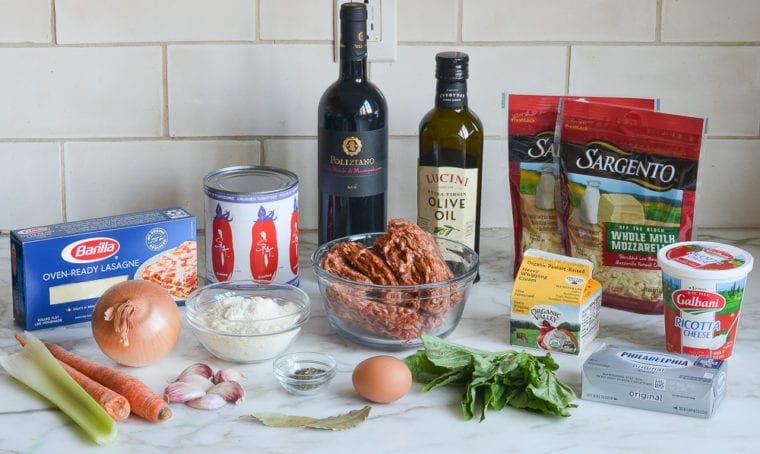
- Onion, Garlic, Carrots, and Celery: These vegetables are the base of the sauce, contributing to the depth of flavor.
- Italian Sausage: The key flavor component of the sauce, it adds richness and depth of flavor with its spices and fat content.
- Red Wine: Ådds acidity and complexity to the sauce.
- Canned Crushed Tomatoes: Provides body, acidity, and tomato flavor to the sauce.
- Heavy Cream: Added to the tomato sauce to balance the acidity of the tomatoes and wine.
- Thyme and Bay Leaves: These herbs contribute aromatic flavors to the sauce.
- Ricotta Cheese: Mixed with egg, cream cheese, and Parmigiano-Reggiano, used as a creamy layer in the lasagna, adding moisture and richness.
- Cream Cheese: Adds extra creaminess and tang to the ricotta mixture, and prevents the ricotta from becoming grainy when baked.
- Egg: Acts as a binder in the ricotta mixture, helping it to set and maintain structure when the lasagna is baked.
- Parmigiano-Reggiano: A hard, aged cheese that’s rich in flavor, added to the ricotta mixture and also sprinkled on top of the lasagna.
- Oven-Ready (No Boil) Lasagna Noodles: These noodles do not require pre-boiling, which means you don’t have to worry about them slopping around and sticking together, which is always an issue when using regular lasagna noodles to prepare lasagna. They absorb moisture from the sauce and cheese during baking, cooking to perfect tenderness. I like the Barilla brand.
- Mozzarella Cheese: Adds stretchy, melty texture to the layers of the lasagna.
- Jump to the printable recipe for precise measurements
Step-By-Step Instructions
1. Make the Sauce
Begin by placing the onions, garlic, carrots, and celery in a food processor. You need to give them a rough chop first, otherwise, they won’t chop evenly.
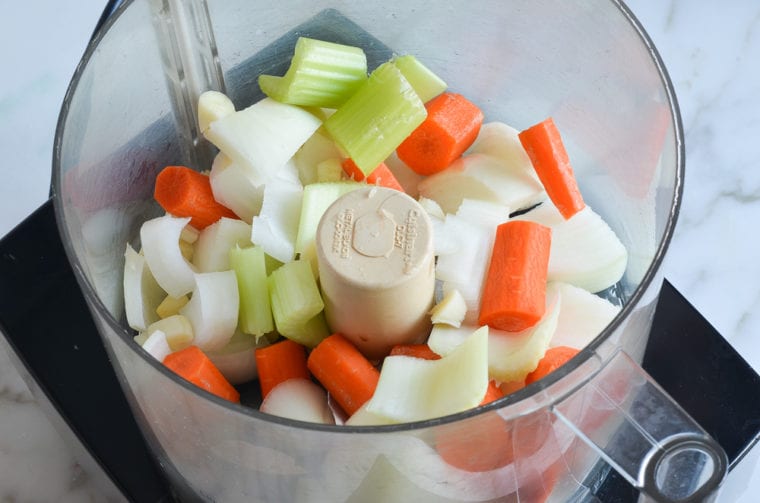
Pulse until minced but not puréed, so that they melt into the sauce.
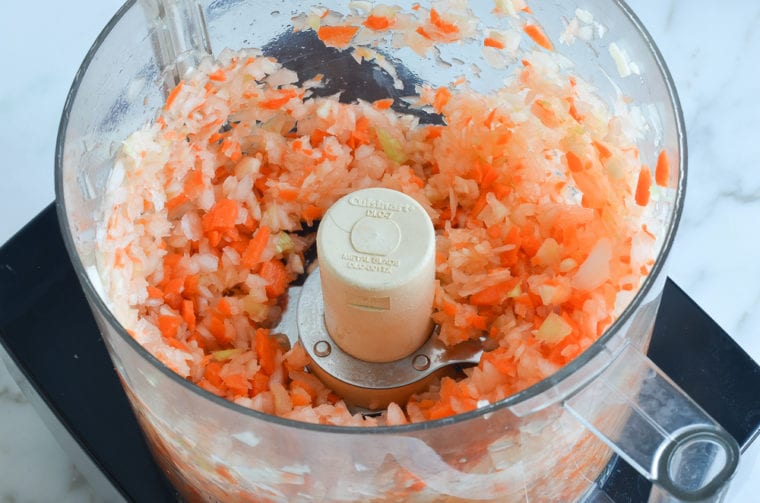
Heat 2 tablespoons of the olive oil in a large pot over medium-high heat, and add the sausage.
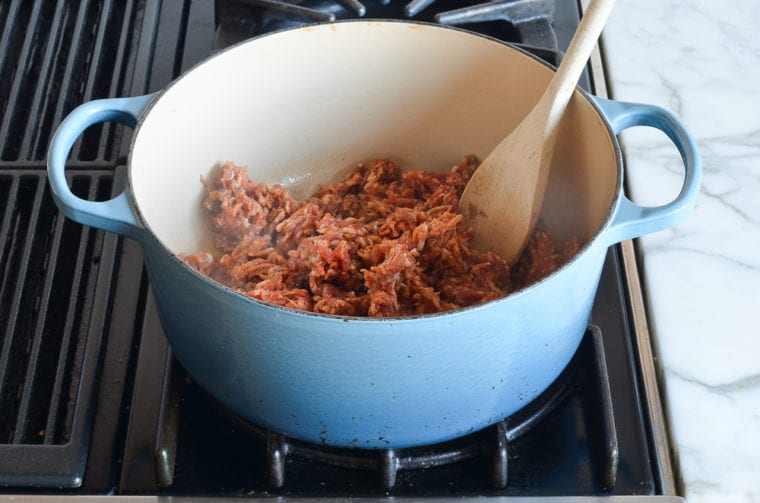
Cook, stirring occasionally and breaking the sausage into small pieces, until slightly browned but not cooked all the way through, about 5 minutes. Using a slotted spoon, transfer the partially cooked sausage to a plate. Set aside.
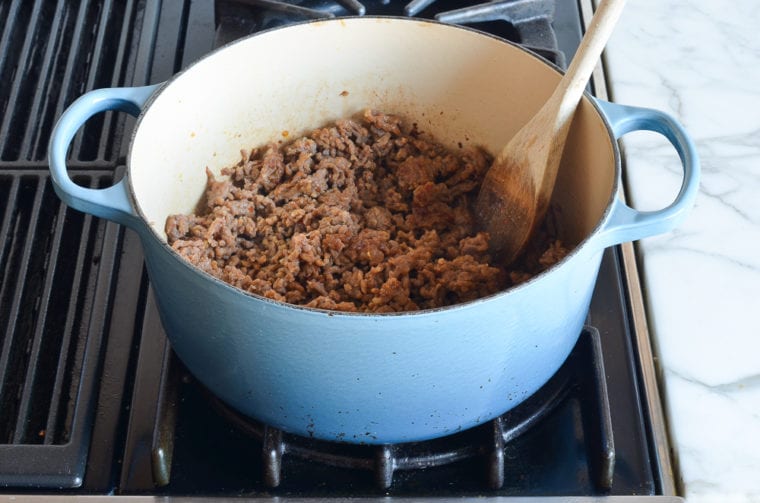
Add the remaining tablespoon of olive oil to the pan, reduce the heat to medium, and add the minced vegetables.
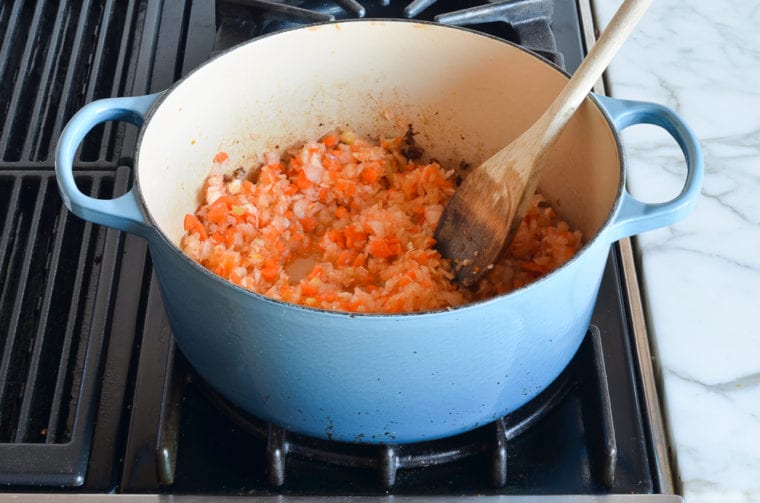
Cook, stirring frequently, until the vegetables are very soft, 6 to 8 minutes. Do not brown; reduce the heat if necessary.
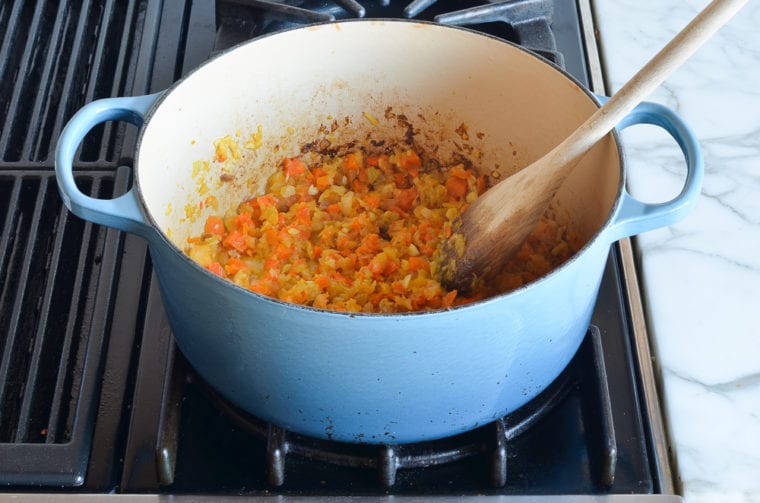
Add the wine and continue cooking, stirring to scrape any brown bits from the bottom of the pan, until the wine is mostly absorbed by the vegetables, a few minutes.
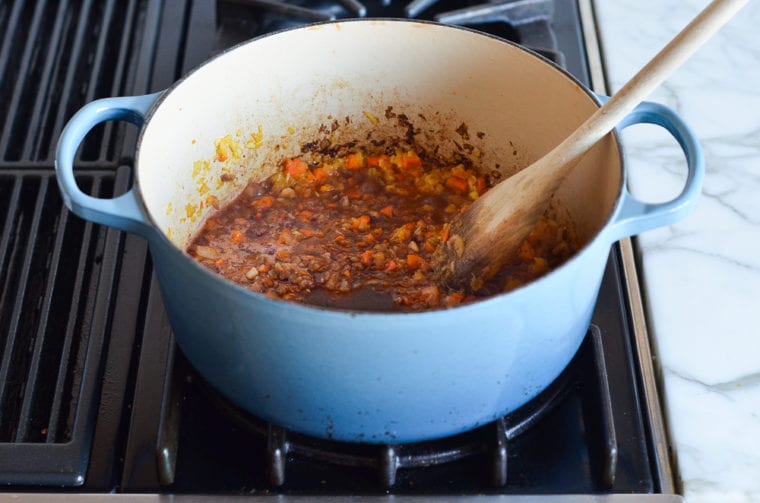
Add the tomatoes, cream, salt, pepper, sugar, thyme and bay leaves.
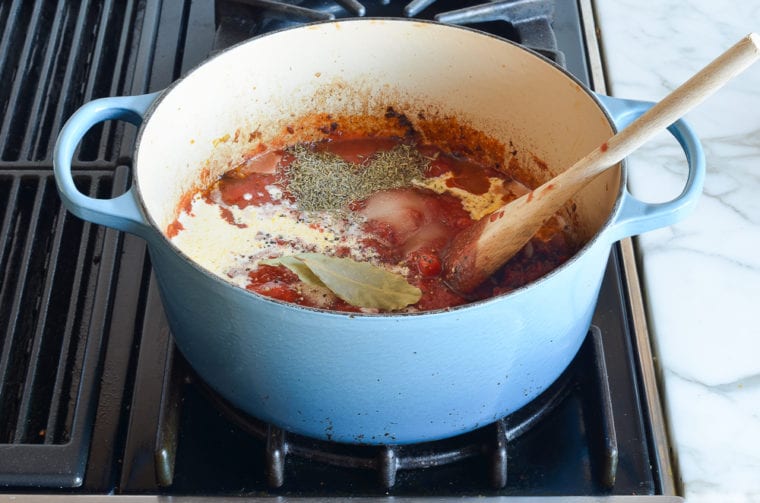
Stir and bring to a boil.
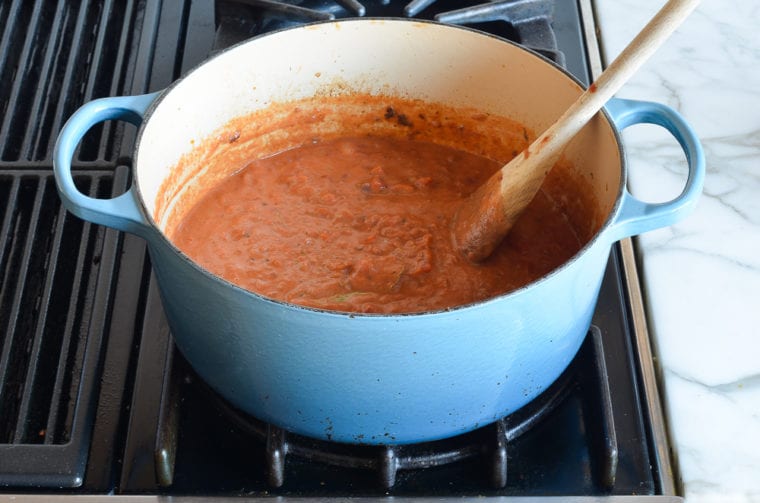
Reduce the heat and simmer until the sauce is thickened, about 20 minutes.
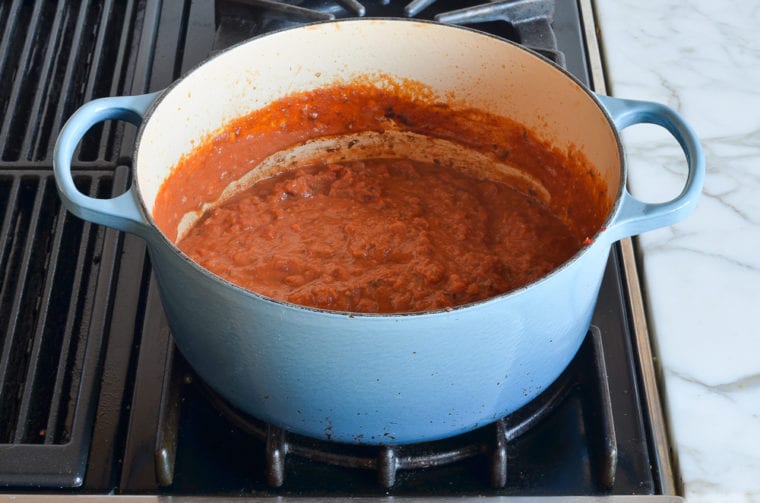
Add the sausage back to the pot.
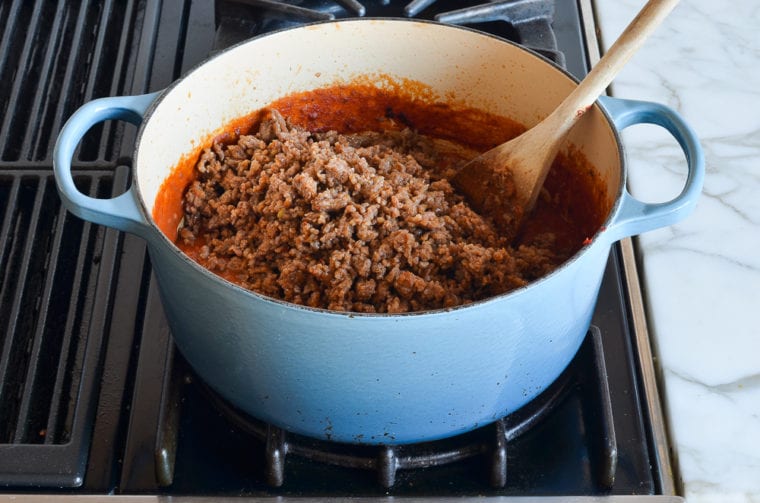
Continue simmering until the sausage is fully cooked and the flavors all meld together, about 10 minutes. Taste and adjust seasoning if necessary. Fish out the bay leaves and discard.
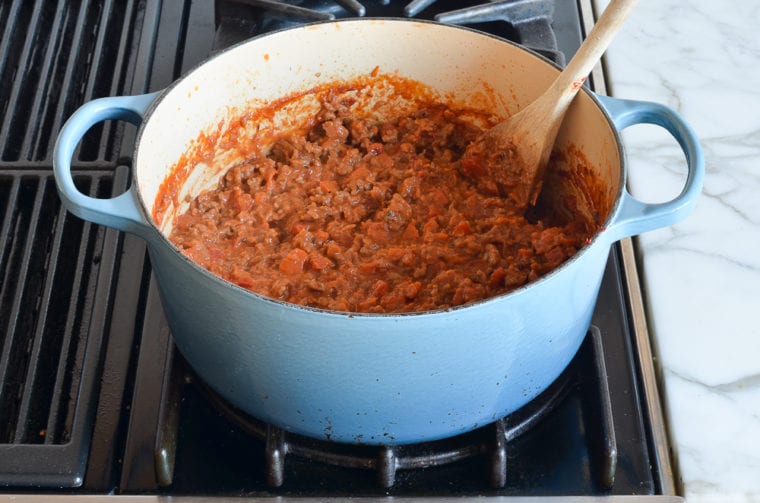
2. Make the Ricotta Filling
Combine the ricotta, cream cheese, egg, garlic, Parmigiano-Reggiano, salt and pepper in the bowl of a food processor fitted with a metal blade.
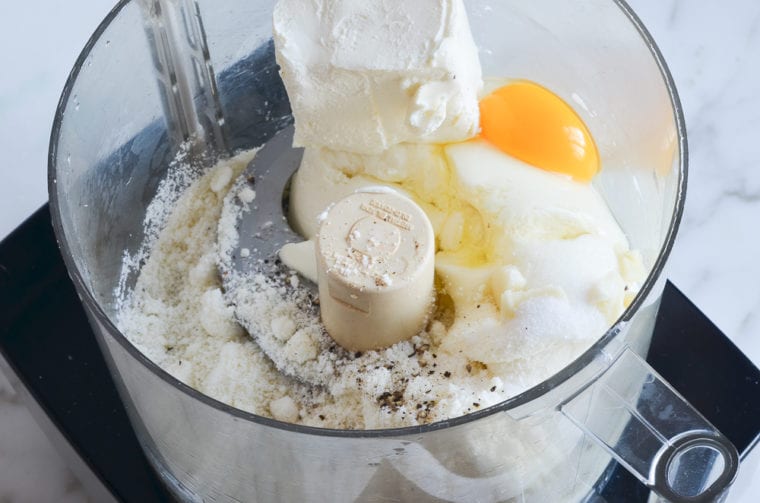
Process until evenly combined, then add the basil.
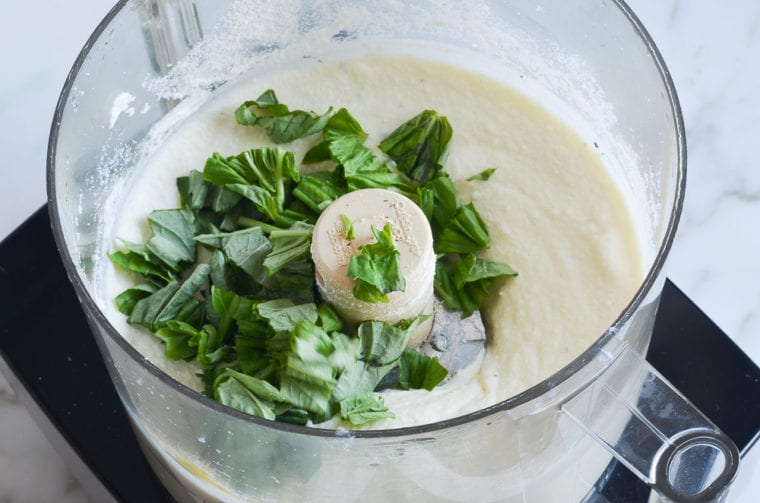
Pulse until the basil is finely chopped.
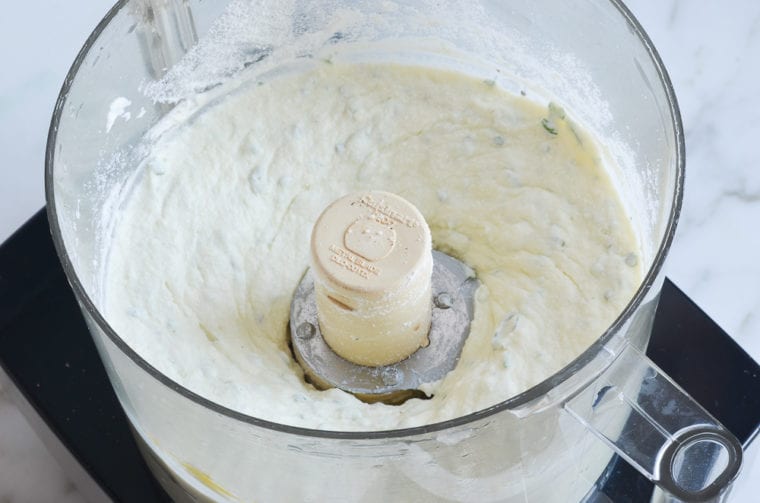
3. Assemble the Lasagna
Spread about 1-1/2 cups of sauce in the bottom of the baking dish.
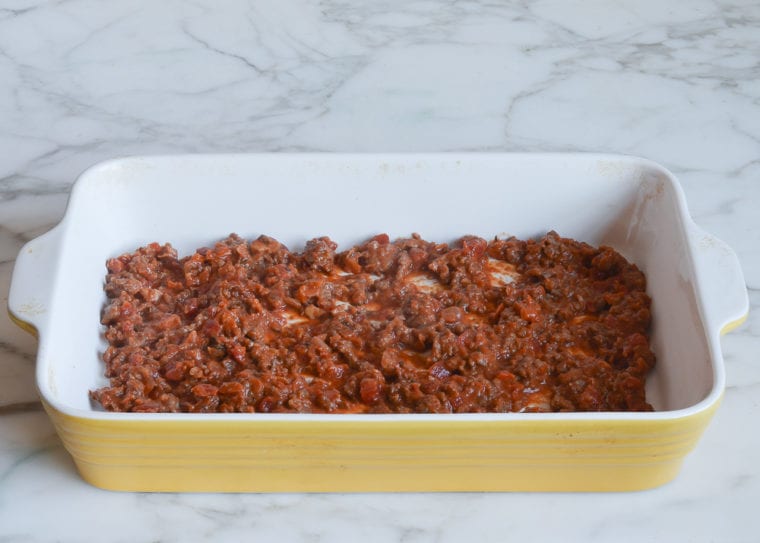
Arrange 3 noodles over the sauce, and dollop a third of the ricotta filling over the noodles.
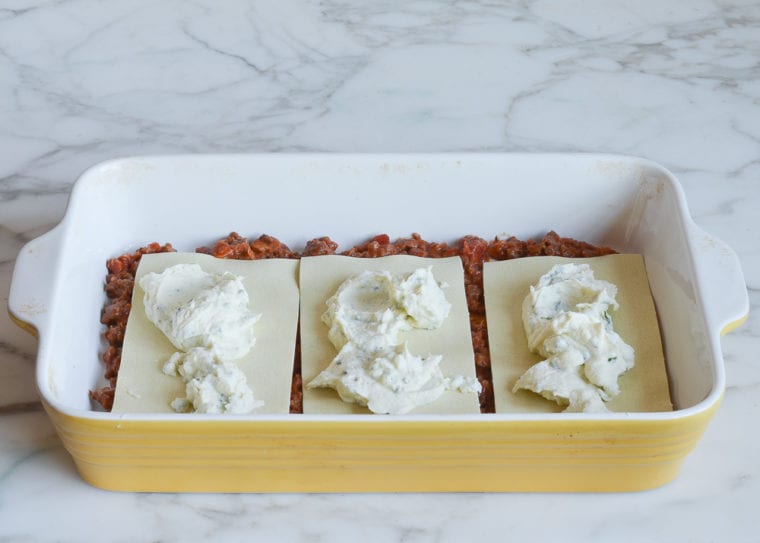
Spread the ricotta mixture evenly over the noodles.
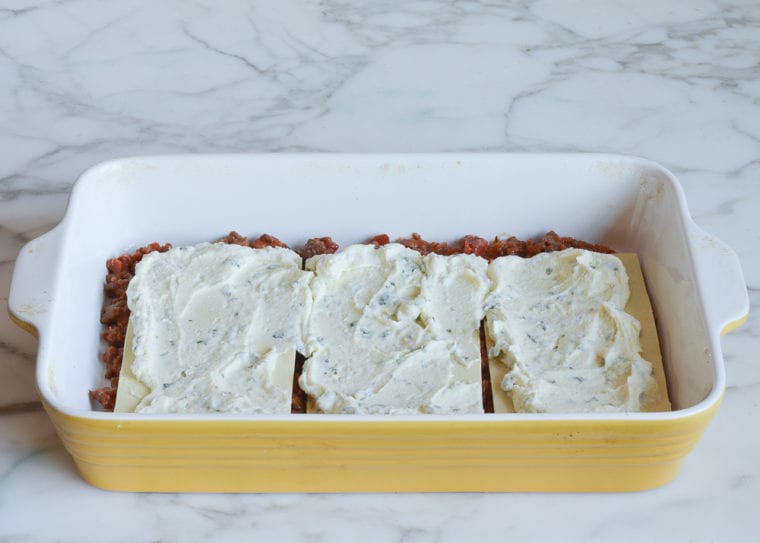
Sprinkle with 3/4 cup mozzarella cheese.
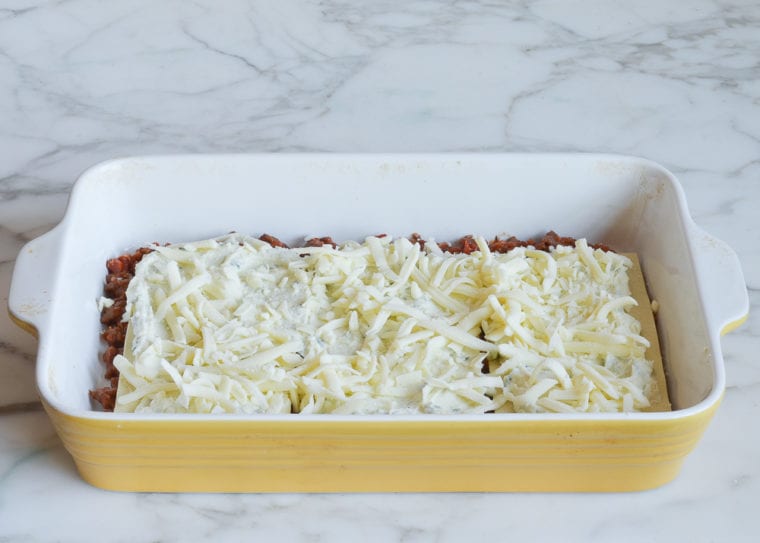
Repeat layering of sauce, noodles, ricotta filling and mozzarella 2 more times. Top with the remaining 3 noodles. Spoon the remaining sauce over the noodles, then sprinkle with the remaining mozzarella and 1/4 cup Parmigiano-Reggiano.
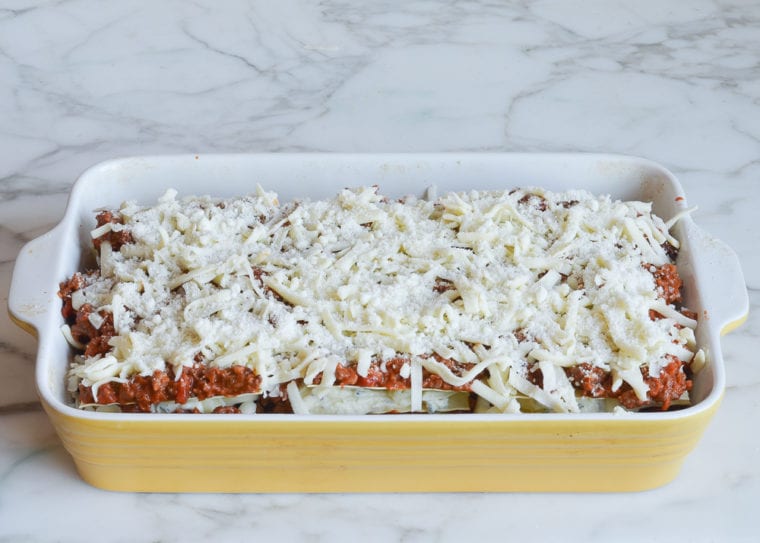
Spray a large piece of foil with nonstick cooking spray. Cover the lasagna tightly with the foil, sprayed side down. Bake for 40 minutes in a 375°F oven. Carefully uncover and increase the oven temperature to 400°F. Bake, uncovered, until the noodles are tender, the sauce is bubbling, and the edges are golden and puffed, about 20 minutes.
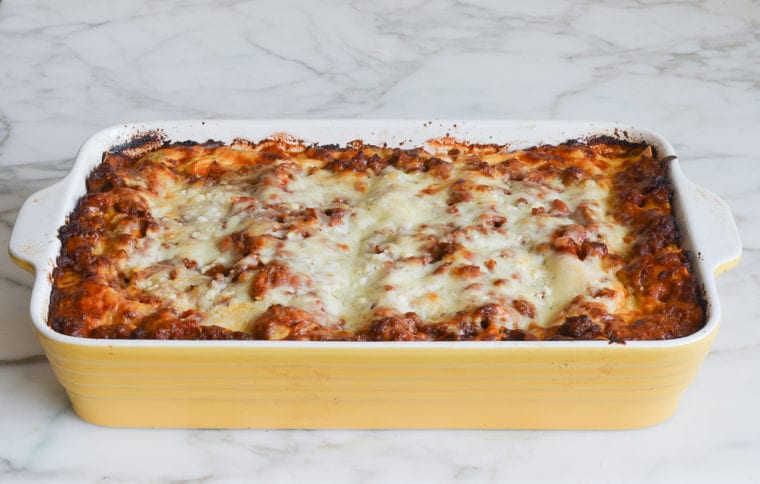
Remove from the oven and let stand for 15 to 20 minutes before serving.
Frequently Asked Questions
Absolutely! The lasagna can be assembled and refrigerated up to 1 day ahead of time before baking. Allow a few extra minutes in the oven if baking from cold.
Yes, lasagna can be frozen for up to 3 months. If you choose to freeze it before baking, ensure it is thoroughly defrosted in the refrigerator for 24 hours before you follow the recipe’s baking instructions. For already baked lasagna, place any leftovers in a freezer-safe container, or cut it into individual servings. Each serving should be tightly wrapped first in plastic wrap and then in foil. To reheat, cover the lasagna with foil and warm it in an oven preheated to 325°F (165°C) until it is heated through.
Italian sausage is the best choice for this recipe because it is loaded with spices and herbs, such as salt, oregano, basil, fennel, garlic, and red pepper flakes. In contrast, ground beef is completely unseasoned, which means it lacks these built-in flavors. If you decide to use ground beef, I recommend amping up the seasoning by adding a mix of herbs and spices mentioned above.

Video Tutorial
You May Also Like
Classic Lasagna
Comforting, familiar flavors but refined—my all-time favorite lasagna layers oven-ready noodles, a rich meat sauce, veggies, and plenty of cheese.
Ingredients
For the Sauce
- 1 medium yellow onion, roughly chopped
- 5 garlic cloves, roughly chopped
- 2 medium carrots, roughly chopped
- 1 stalk celery, roughly chopped
- 3 tablespoons olive oil, divided
- 1½ pounds Italian sausage (bulk or removed from casing)
- ¾ cup dry red wine
- 1 (28 oz.) can crushed tomatoes
- ½ cup heavy cream
- ¾ teaspoon salt
- ¼ teaspoon freshly ground black pepper
- 2 teaspoons sugar
- 1½ teaspoons dried thyme
- 2 bay leaves
For the Ricotta Mixture
- 1 (15 oz.) container whole milk ricotta (about 1¾ cups)
- 3 oz. cream cheese
- 1 large egg
- 1 garlic clove, roughly chopped
- ¾ cup grated Parmigiano-Reggiano
- ¾ teaspoon salt
- ¼ teaspoon freshly ground black pepper
- ½ cup roughly chopped fresh basil
For Assembling
- 12 oven ready (no boil) lasagna noodles (such as Barilla)
- 16 ounces shredded whole milk mozzarella cheese
- ¼ cup grated Parmigiano-Reggiano
Instructions
For the Sauce
- Place the onions, garlic, carrot and celery in the bowl of a food processor fitted with the metal blade; pulse until finely minced but not puréed.
- Heat 2 tablespoons of the olive oil in a large pot over medium-high heat. Add the sausage into the pan and cook, stirring occasionally and breaking the sausage into small pieces, until slightly browned but not cooked all the way through, about 5 minutes. Using a slotted spoon, transfer the partially cooked sausage to a plate. Set aside.
- Add the remaining tablespoon olive oil to the pan, reduce the heat to medium, and add the minced vegetables. Cook, stirring frequently, until the vegetables are very soft, 6 to 8 minutes. Do not brown; reduce the heat if necessary.
- Add the wine; continue cooking, stirring to scrape any brown bits from the bottom of the pan, until the wine is mostly absorbed by the vegetables, a few minutes.
- Add the tomatoes, cream, salt, pepper, sugar, thyme and bay leaves and bring to a boil. Reduce the heat and simmer, covered, until the sauce is thickened, about 20 minutes.
- Meanwhile, transfer the sausage to a cutting board and chop into smaller pieces (big chunks don't work well in lasagna).
- Add the sausage back to the pan and continue simmering, covered, until the sausage is fully cooked and the flavors meld together, about 10 minutes. Taste and adjust seasoning if necessary. Fish out the bay leaves and discard.
For the Ricotta Mixture
- Combine the ricotta, cream cheese, egg, garlic, Parmigiano-Reggiano, salt and pepper in the bowl of a food processor fitted with a metal blade. Process until evenly combined. Add the basil and pulse until finely chopped.
For Assembly
- Preheat the oven to 375°F.
- Spread about 1½ cups of sauce in the bottom of a 13x9x2-inch baking dish. Arrange 3 noodles over the sauce (there will be a bit of space between the noodles; they expand as they cook). Dollop a third of the ricotta filling over the noodles, then spread evenly to cover. Sprinkle with ¾ cup of the mozzarella cheese. Repeat the layering of sauce, noodles, ricotta filling and mozzarella 2 more times. Top with the remaining 3 noodles. Spoon the remaining sauce over the noodles, then sprinkle with the remaining mozzarella and ¼ cup Parmigiano-Reggiano.
- Spray a large piece of foil with nonstick cooking spray. Cover the lasagna tightly with the foil, sprayed side down. Bake for 40 minutes. Carefully uncover and increase the oven temperature to 400°F. Bake, uncovered, until the noodles are tender, the sauce is bubbling, and the edges are golden and puffed, about 20 minutes. Remove from the oven and let stand for about 15 minutes before serving.
- Make-Ahead Instructions: The lasagna can be assembled and refrigerated up to 1 day ahead of time before baking. Allow a few extra minutes in the oven if baking from cold.
- Freezer-Friendly Instructions: The lasagna can be frozen for up to 3 months. If you choose to freeze it before baking, ensure it is thoroughly defrosted in the refrigerator for 24 hours before you follow the recipe's baking instructions. For already baked lasagna, place any leftovers in a freezer-safe container, or cut it into individual servings. Each serving should be tightly wrapped first in plastic wrap and then in foil. To reheat, cover the lasagna with foil and warm it in an oven preheated to 325°F until it is heated
Pair with
Nutrition Information
Powered by ![]()
- Per serving (8 servings)
- Serving size: 1 slice
- Calories: 776
- Fat: 45g
- Saturated fat: 23g
- Carbohydrates: 47g
- Sugar: 9g
- Fiber: 4g
- Protein: 46g
- Sodium: 1812mg
- Cholesterol: 158mg
This website is written and produced for informational purposes only. I am not a certified nutritionist and the nutritional data on this site has not been evaluated or approved by a nutritionist or the Food and Drug Administration. Nutritional information is offered as a courtesy and should not be construed as a guarantee. The data is calculated through an online nutritional calculator, Edamam.com. Although I do my best to provide accurate nutritional information, these figures should be considered estimates only. Varying factors such as product types or brands purchased, natural fluctuations in fresh produce, and the way ingredients are processed change the effective nutritional information in any given recipe. Furthermore, different online calculators provide different results depending on their own nutrition fact sources and algorithms. To obtain the most accurate nutritional information in a given recipe, you should calculate the nutritional information with the actual ingredients used in your recipe, using your preferred nutrition calculator.

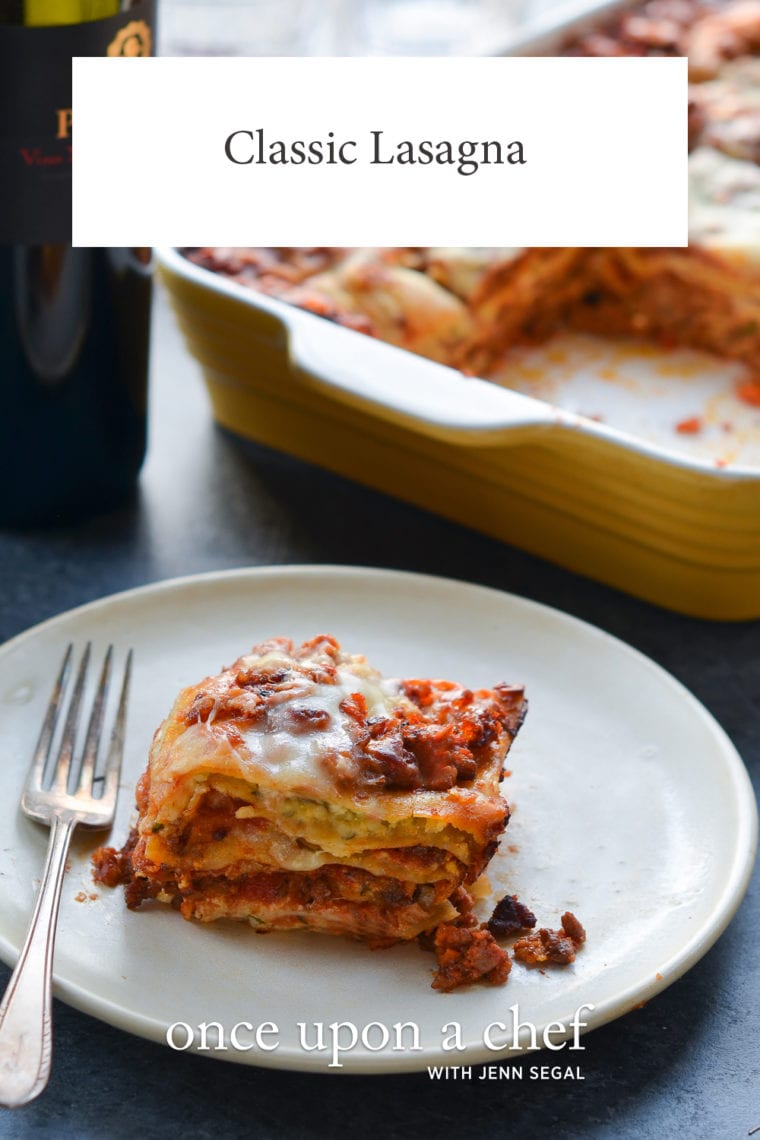
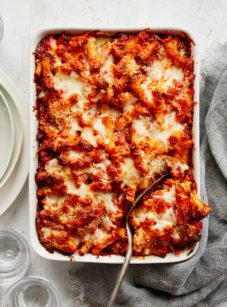
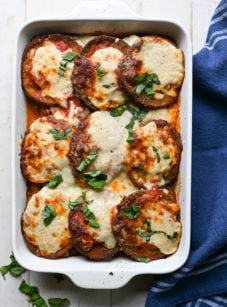
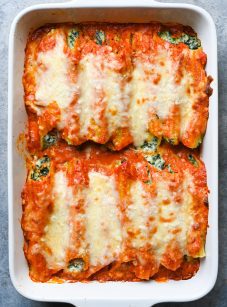
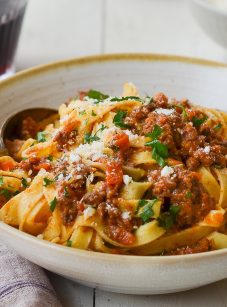
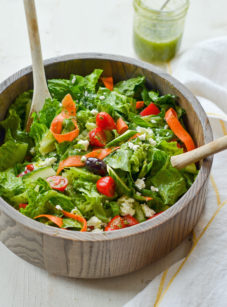
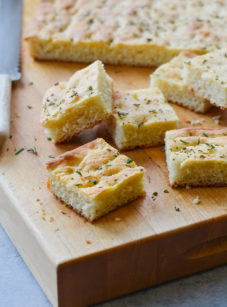
Wow – this was fantastic. I put down a thin layer of the cheese over homemade semolina lasagna noodles (diabetic) then a layer of thinly sliced meatballs I had to use up, then another thin layer of cheese. I also added about a cup of homemade chicken broth to the sauce to compensate for the raw lasagna and the fact that my son kept stealing spoonfuls of the sauce when it was almost done because it smelled and tasted so great. Also I had no cream so used a couple tablespoons of the cream cheese in my sauce. The recipes for both the cheese mixture and sauce were so superior that even with all my changes, the dish turned out wonderfully and was greatly appreciated by all. Thank you Jenn for not only this recipe but all ypur wonderful recipes.
Hi Jenn! If I prepare this early in the day, is it best to cook it and reheat it for dinner? Or refrigerate and cook it later? Thanks!
Hi Ellyn, I’d refrigerate it and cook it later. Enjoy!
Oh my goodness, this was so good! I made it exactly as the recipe stated and froze it since I was taking it to a weekend away with the the girls. I let it sit in the fridge for 24 hours prior the baking and baked as the instructions stated. It was delicious! Better than any restaurant lasagna I’ve ever had.
Can this be made a day ahead?
Make the sauce, let cool, assemble, cover and refrigerate?
Yes, definitely!
Can I just use regular catelli lasagne? Is there enough liquid in the recipe to cook it?
Julia
Hi Julia, You’d need to took them about 3/4 of the way though before using them in the lasagna. If not, they’d be too hard/crunchy.
I made this tonight. Because of an overly-frustrating day, it took me nearly three hours to go from starting the sauce to getting it in the oven. Along the way, I got interrupted a few times and even messed up the assembly. 😎
Well…it came out spectacularly. Nothing better for de-stressing than a big plate of lasagna, that’s for sure. I loved the sauce, nice and thick. I’m going make another batch and use it for pizza sauce. I won’t have to have any other toppings, because it’ll already be packed full of sausage.
Thanks!
Oh, Jenn, this is one of the best darn meals I’ve ever made – and I am rarely fully satisfied with my own meals (high standards). Like all home-made lasagna meals, it involved a LOT of effort, of course, but it was definitely worth it and I would be happy to make this one for company.
I made a few substitutions based on what I had in my fridge, including 2 percent cottage cheese instead of much more expensive ricotta (and I can’t imagine the ricotta tasting any better) and half-and-half cream in place of heavy cream. I also used almost 1 lb of veggie ground round and 1/2 pound of mild Italian sausage, crumbled, which yielded plenty of sausage flavour. Finally, I used fresh sheets of lasagna, which were pure perfection. At cooking time, I didn’t cover the lasagna at all and it was perfect after 45 minutes at 375 degrees + 10 mins. of resting time. It was, in my experience, much less messy than covering the lasagna with foil (even when properly oiled), so I’m glad it worked out sans foil cover.
I am starting to feel like a broken record with these reviews, but I like to convey my gratitude where it’s due, so thanks for another huge hit of a recipe!!! You rock.
I came upon your website recently while searching for a homemade granola recipe. I tried your recipe and have been making it faithfully every few weeks–even some for my close friends. So I thought I would try another one of your recipes, sausage lasagne . The bolognese sauce is delicious. I added some fresh baby spinach to one of the layers. The only other change I would make is to use regular lasagna noodles since they are a bit thicker than the ready to bake kind. Great recipe! Thank you.
I would love to use your recipe but can you tell me if I use homemade lasagna, do I need to cook it first?
Thank you!
No need to cook them first if they are homemade noodles Elena!
Thank you so much for the tip about adding cream cheese to the ricotta mixture to get rid of the grainy texture. My family thought it made all the difference-they didn’t leave a speck behind and stuffed themselves silly (they said “I’m full but it’s too good to stop eating!) thanks for turning me into a great home cook!